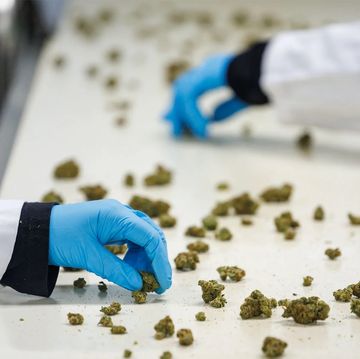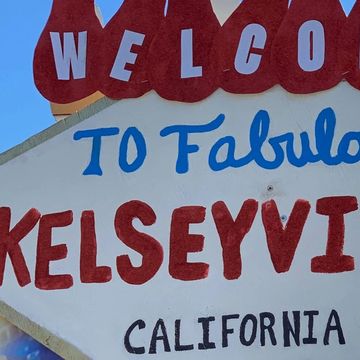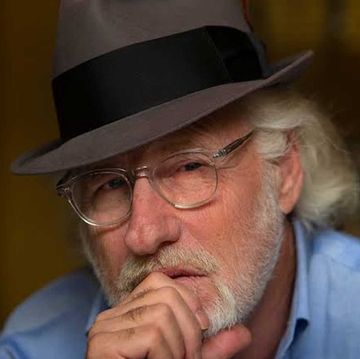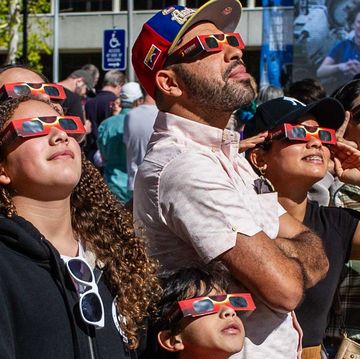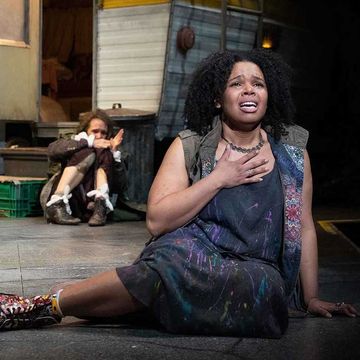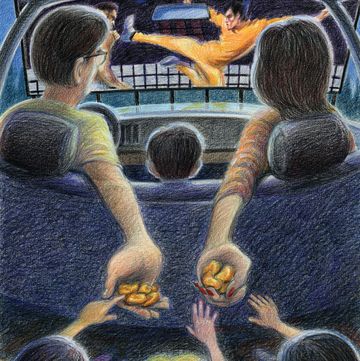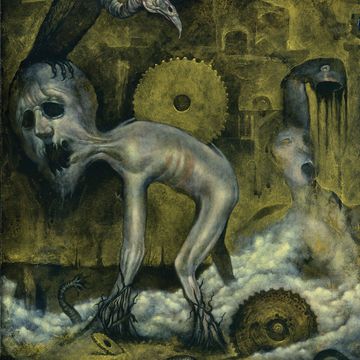Dating back to 1955 but in its current location since 1984, Mercado Miguel Hidalgo, in Tijuana, is a cornucopia disguised as a fortress: a collection of 80 or so stalls housed in a permanent two-story structure that surrounds a parking lot. It should be either the first or the last stop of your Baja adventures—not just because of all the goodies to take home but because its bathrooms cost only five pesos (toilet paper is an extra peso).
It’s also one of my favorite places on Earth. I’ve been visiting since I was a child and always pop in before lining up to cross the U.S.-Mexico border, just two miles away. But I hadn’t visited Mercado Hidalgo (what we regulars call it) since before the pandemic, so I was full of trepidation—how much might have changed?—after my wife and I decided to take a day trip there this past fall.
The mercado occupies a city block, and you enter through one of three small gates. The parking lot was nearly empty when we arrived at around eight in the morning on a Monday. We started with a pick-me-up at El Hidalgo, a small coffee shop in a structure in the middle of the parking lot that also holds the restrooms, a chapel, and a clothing store. “México te despierta”—Mexico wakes you up—is the café’s slogan, and El Hidalgo’s concoctions were truth in advertising.
The steam of an espresso machine accentuated the boleros that played on Spotify, and the sweet aromas of coffee and tea hung in the air as a young, stylish woman prepared our orders. My wife loved her matcha latte with oat milk, while I went with a seasonal specialty: chai Azteca, a flavor-packed hot brew of chai, cardamom, anise, cloves, and Mexican chocolate that was equal parts savory and sweet and just all-around spectacular.
We took our drinks out Mercado Hidalgo’s main gate to Tacos Fitos. The food cart is famous not just for delicious birria tacos but for the Benihana-style show that its taqueros put on, which includes tossing scalding consommé over their heads and into cups behind their backs with nary a drop spilled. Next to it stands Mariscos El Conchal, a cart that specializes in the tart, fiery seafood dishes of Sinaloa, the state across the Sea of Cortez from Baja California Sur. My wife did a happy dance as she bit into an aguachile tostada doused in housemade chiltepín salsa that slowly numbed her lips.
This article appears in Issue 26 of Alta Journal.
SUBSCRIBE
Appetizers out of the way, we marched back into Mercado Hidalgo. The eastern half is mostly vendors of fresh and dried produce, while the western portion is where most of the piñata and candy shops are. Friendly recitations of “Vengan, vengan” (come in, come in) offer a pleasant soundtrack.
It’s easy to get overwhelmed, so the trick is to quickly move through all the stalls once and do your best to see everything, then make your purchases on the next loop. Not only will you get a second look, but you may also find that you missed something. Take Dulceria Las Delicias de Mi Pueblo, a place my family long favored for candies and party favors. This time, on my second pass, I found buckets of moles: green, red, orange, sweet, spicy, and many other flavors. The stall offered more moles by far than my usual spot on the other side of the mercado. Had Las Delicias de Mi Pueblo always offered moles—and I just never noticed—or had it spied an opportunity and gone after a rival?
I didn’t buy any moles, but my wife did buy two Chucky piñatas. We dropped off the effigies of the slasher-film icon in my Yukon, then headed over to the produce area. Chiles and beans from across Mexico beckoned from boxes next to bags of dried shrimp. One stall was filled nearly to the ceiling with coconuts; another had dozens of big jars containing dried leaves and powders for tea. We ended up at La Cava del Queso, a shop that stocks Mexican cheeses like queso fresco and menonita but also some that fuse European and Mexican traditions, like the delicious gouda studded with Tabasco chiles that we bought.
Our experience at Mercado Hidalgo was much like past visits, but some change, a constant in this metropolis, was noticeable. The only chain store I recalled being among the sellers was La Mexicana, a kitchen-supply shop that my wife loves to haunt for her restaurant. That day, though, I saw two stalls occupied by Brenda’s, a health food retailer. Also, the taxidermied goat’s head above the entrance to Birrería El Rincón del Oso had been removed. That stung, because I’ve been eating at that restaurant for decades. Its extraordinary birria (of both beef and goat varieties) and cheesy gorditas take me back to trips there with my parents in my dad’s tiny Ford pickup, my sister and I crouching in the cab. Things had changed inside, too: flat-screen televisions had replaced the wandering musicians for entertainment. Throughout the mercado, more vendors were now accepting credit cards. The tollbooth to exit the main gate had become automated. Two half-built skyscrapers loomed on the horizon like Godzilla, ready to stomp out the working class.
We drove away wondering, How much longer might my Mercado Hidalgo survive? Our visit had brought comfort and a reminder to return ASAP—before it changes even more.•
Gustavo Arellano is the author of Orange County: A Personal History and Taco USA: How Mexican Food Conquered America. In 2025, Arellano was named a Pulitzer Prize finalist for his work as a columnist for the Los Angeles Times. He was formerly editor of OC Weekly, an alternative newspaper in Orange County, California, and penned the award-winning ¡Ask a Mexican!, a nationally syndicated column in which he answered any and all questions about America’s spiciest and largest minority. Arellano is the recipient of awards ranging from the Association of Alternative Newsweeklies Best Columnist to the Los Angeles Press Club President’s Award to an Impact Award from the National Hispanic Media Coalition, and he was recognized by the California Latino Legislative Caucus with a 2008 Spirit Award for his “exceptional vision, creativity, and work ethic.” Arellano is a lifelong resident of Orange County and is the proud son of two Mexican immigrants, one of whom came to this country in the trunk of a Chevy.



